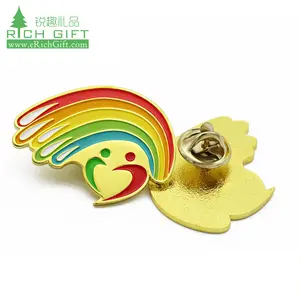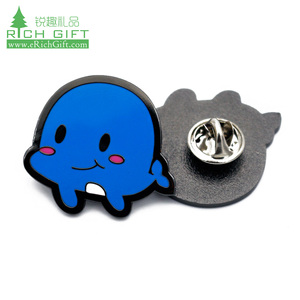
All categories
Featured selections
Trade Assurance
Buyer Central
Help Center
Get the app
Become a supplier

(884 products available)






 Ready to Ship
Ready to Ship













































The types of badges worn by bodyguards are crafted to distinguish bodyguard personnel in various commercial activity and event environments. These badges are not only emblems of authority and identity for security personnel, but they are also invaluable assets for collectors and enthusiasts of such themed items, especially those in the law enforcement arena. Common bodyguard badges include the following:
Bodyguard Badge with Gun Symbol
This badge design features a gun symbol to represent bodyguards' protective and security enforcement roles. Often found in strong protective detail work, such a badge conveys an image of power and readiness. There are typically areas on these gun badges for personal customization, including rank, name, and security company, making them the preferred choice for many private security firms.
Star Shaped Bodyguard Badge
This form of badge often resembles traditional police badges, giving the wearers a very authoritative look. Such star-shaped badges are commonly used in high-profile or executive protection assignments, where the bodyguard is expected to maintain a very professional appearance. They may also feature some decorative elements in star badges, which are often associated with law enforcement or military heritage.
Shiny Bodyguard Badge
Shiny bodyguard badges are made from materials that reflect light, such as polished metal or chrome finishes. A shiny badge is often associated with high-ranking personnel or special units within a private security detail. The badge also serves a practical decorative function. Shiny badges are, therefore, typically used in VIP events where a bodyguard's smart appearance adds to the environment's professionalism and sophistication.
Real Bodyguard Badge
A real bodyguard badge refers to a badge legally and officially issued by licensed security services or governmental agencies. Such badges are unique in design and often incorporate elements that authenticate them for use in active security details. Due to the real badges, there are regulations concerning their reproduction and use; they hold great value to collectors seeking items that carry genuine historical and functional significance.
Customizable Bodyguard Badge
Custom bodyguard badges are made to order, and people can choose their details, like a name, rank, and badge number. Usually made to represent a particular security detail or a certain area of service, these badges could be further customized in their designs, colors, and shapes based on the wearers' preferences. For collectors, custom badges are very appealing as they offer individualization that for mass production badges is not possible.
Bodyguard badges have evolved into highly detailed and symbolic items that reflect the security profession's spirit and purpose. These designs convey authority, authenticity, and individuality, often incorporating notable elements that bodyguard services are proud of. Here are these designs' key visual and structural elements:
Materials Used
Metals such as brass, steel, and zinc alloys are used to craft bodyguard badges since they are durable and can be shaped easily. Badges may also contain enamel or colored lacquer for decorative purposes and to denote various law enforcement agencies or fraternity symbols. In some situations, especially awards for rank, badges can be crafted from high-end materials like gold or silver for that classy look.
Shape and Symbolism
Bodyguard badges can take any shape, easily recognizable by stars, shields, and circles. Each form can symbolize something different, from authority to protection. Badges also contain designs incorporated with bodyguard services or security symbols such as swords, eagles, or locks. These symbols not only beautify but also convey the values and mission of the associated security detail.
Customizable Elements
Most bodyguard badges have areas that can be customized, such as rank, name, and badge number. Such badges are predominantly for private security firms or dedicated bodyguard details. This part of the badge is customizable, as it can be used to add a unique touch that individualizes every badge in an otherwise homogeneous set.
Color Scheme
Predominantly, bodyguard badges are in dark shades, like black or navy blue, or metallic tones, like gold or silver, in keeping with an air of authority and professionalism. There are, however, bright colors, such as red or green, used in certain emergencies to promote recognition or for practical purposes in certain types of badges, such as visible safety badges.
Insignia and Inscriptions
Bodyguard badges are often inscribed with the insignia of the rank or units and usually have the law enforcement agencies or private security companies' names. This not only adds to the aesthetic value but also to the practical value of the badge as a tool of identification in professional contexts. For collectors, such elements are desirable since they impart historical value.
Security Services
In commercial security settings, bodyguard badges act as identification for the clients and the general public and as symbolic authority. Security personnel services employ typically designed and customized badges that reflect the company's branding and the nature of the security work they do, whether at a physical site or via surveillance. In this case, a badge serves the dual function of a professional accessory and a trust-enhancing tool.
VIP Protection
Badges worn by bodyguards protecting celebrities, politicians, or other VIPs are often ornate and imbued with a lot of symbolism. Such badges are designed to project a very professional image of security services in sensitive environments. The bodyguard badges help distinguish the security detail from other event staff or attendees and indicate to onlookers that the person is trained to provide protection.
Military and Government
In the military or government contexts, bodyguard badges can denote special qualifications or assignments pertaining to personal protection operations. These badges are usually highly intricate with a lot of tradition embedded into them, in keeping with that country's military or governmental insignia. Collectors and historians value these bodyguard badges, as they are connected to important historical events or figures.
Corporate Events
Bodyguard badges can ensure order and security at corporate events, galas, or conferences. Normally, external bodyguard services are contracted for these large gatherings, and their badges serve to distinguish them from other event staff. The badges communicate to guests and participants that there are trained personnel available who can address security concerns without disrupting the event atmosphere.
Law Enforcement Role Play and Collecting
Bodyguard badges are a popular choice for people involved in modeling as law enforcement personnel or for badge collectors. Such people appreciate the artistry and the historical lessons that the badges teach about police and security work. Bodyguard badges signify dedication and can also be offered as awards for honorifics in fandoms.
Bodyguard badges are made to serve functionally and aesthetically in security tasks, identifying skilled personnel with authority. This section details the specifications and care instructions for bodyguard badges to ensure their durability and continued professional appearance.
Durability and Size
Bodyguard badges are normally made of metal like brass, zinc, or stainless steel. Any of these metals hold up to everyday wear while being easily stamped or molded into the desired badge shape. Polished, painted, or enamel treated metals can be used to give the badge surface some aesthetics. Most bodyguard badges are usually around 3 to 5 inches in length or diameter and can be pinned on or sewn to clothing.
Water-Resistant
Badges often contain water-resistant features through coatings and sealants for those in climate-variable environments. Badges meant for outside protection during rain, heat, or cold usually have a protective enamel over them to inhibit moisture from damaging the insignia.
Heat and Chemical Resistance
In addition to being wear-resistant, bodyguard badges should also be heat and chemical-resistant in specific environments, such as industrial or high-risk environments, where heat exposure or aggressive substances might degrade the badge. Coatings that are varnish, lacquer, or any poly-based resin are effective at increasing its chemical and heat resistance.
A bodyguard badge should be properly maintained to keep it functional and professional-looking.
Regular Cleaning
The routine of cleaning a bodyguard badge depends on the material from which it has been constructed. For metal badges, non-abrasive microfiber cloths and metals often work well with cleaning solutions that do not contain petrochemicals to avoid scuffing the metal surfaces. After at the badge, the cleaning task is to remove all the encrustations, which may be on the inside of the enamel as they dull the badge or outside and on the fabric.
Storage
Storage conditions also affect a bodyguard badge's integrity and appearance. Badges should be stored in dry areas to keep moisture from tarnishing or corroding them. Fabric-lined storage boxes or containers help prevent encrustation due to airborne dust and particulates in the environment, causing surfaces to scuff or scratch over time. Badges that have gems or are intricately designed may need individual compartments to prevent such badges from rubbing against each other.
Inspections
It is advisable to have concurrence regularly, especially for badges used in tough environments. Inspections involve looking at the badge to ascertain that the enamel or metal finish is not cracked, eroded, or that symbols are not worn. Where such repairs include re-enameling or polishing them, it should be done at the earliest to ensure effective performance and the good looks of the badge.
Conditioning
Badges may require some rejuvenation after long use, especially those made from metals with a propensity for surface tarnishing like silver. To a corrosion-prone surface, cream or paste metal polishes work well, and abrasives, such as microfiber pads or steel wool, should not be used on badges with an enamel finish since it can damage the enamel and its colors. Regular metal conditioning protects the badge and keeps it in a polished reflection state.
A.1. Usually, bodyguard badges identify a bodyguard as professional security personnel. Bodyguard patches demonstrate authority and trust and signify someone providing protection and security services.
A.2. Yes, they can be. Many bodyguard badges have customizable areas for personalizing names, ranks, and insignia. Bodyguard badges allow security details to create unique items that reflect individual service particulars.
A.3. Bodyguard badges are frequently made of metals like brass, stainless steel, or zinc alloys. Polished enamel or lacquer may cover them for better appearance, which uses metal for durability.
A.4. Bodyguard badges are valuable for law enforcement and military badges and bodyguard badge collectors. Some badges feature intricate designs or are historically noteworthy and highly sought after for their craftsmanship or importance in security.
A.5. Regularly cleaning the badge with non-abrasive materials and appropriate cleaners will keep it in good shape, avoiding tarnish and wear. Also, proper storage after use and using cloth-lined containers where badges do not touch or crowd helps maintain their professional appearance.